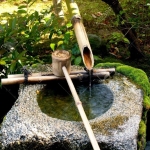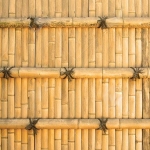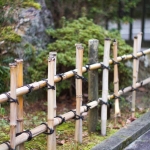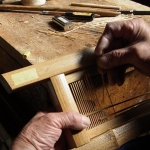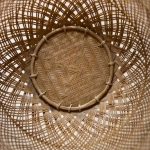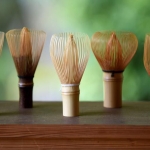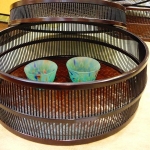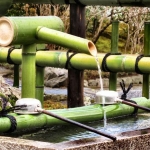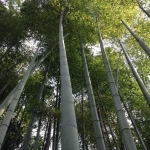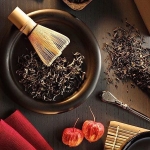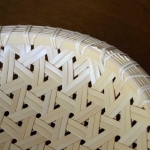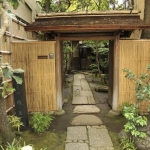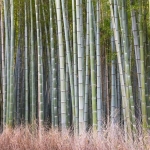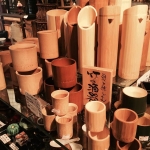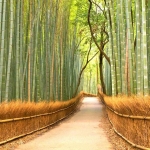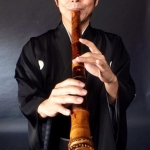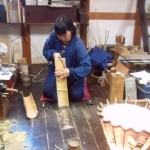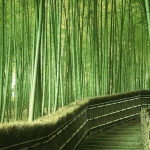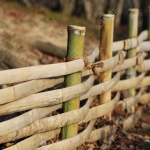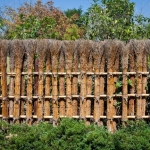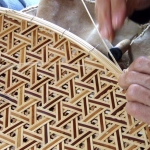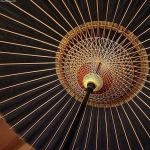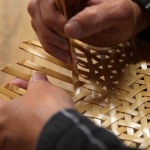Bamboo
Bright droplets in the morning!
Sound of the dew
Dripping in the bamboo
–Buson
Toad
Be so kind as to move to one side
And let me plant these bamboos
–Chora
The warrior, like bamboo, is ever ready for action
–Kensho Furuya
The Japanese word for bamboo is “take”. Bamboo is a very strong plant. Because of its sturdy root structure, it is symbol of prosperity in Japan. For years, people were told to run into the bamboo groves in the event of an earthquake, because the bamboo’s strong root structure would hold the earth together. Simple and unadorned, the bamboo is also symbolic of purity and innocence. “Take o watta youna hito” literally translates into “a man like fresh-split bamboo” and refers to a man with a frank nature.
Bamboo appears in many ancient tales. “Taketori Monogatari (Tale of the Bamboo Cutter)” also known as “Kaguya-hime” (The Princess Kaguya) is the oldest narrative literature in kana script, and one of the most beloved stories in Japan. The story is about Kaguya-hime, who is found inside a bamboo stalk. An old man and woman raise her and she becomes a beautiful woman. Although many young men propose to her, she never marries. Eventually on an evening when the moon is full, she returns to the moon, as it was her place of birth.
This has been made into a delightful film by Ghibli Studio:
Bamboo and sasa (bamboo grass) are used in many festivals to ward off evil. On Tanabata (July 7), people write their wishes on strips of paper of various colors and hang them on sasa.
“Bamboo is found all over in Japan because the warm, humid climate is well suited to its cultivation. It is frequently used in construction and handicrafts. Shakuhachi, a wind instrument, is made of bamboo. Bamboo sprouts (takenoko) also have long been used in Japanese cuisine.
Sho-chiku-bai
The pine, bamboo, and plum (sho-chiku-bai) are an auspicious combination symbolizing long life, hardiness and vitality. The pine stands for longevity and endurance, and the bamboo is for flexibility and strength, and the plum represents a young spirit. This trio is often used in restaurants as a name for the three levels of quality (and price) of its offerings. It is used instead of directly stating quality or price (e.g. the highest quality would be pine). Sho-chiku-bai is also used for the name of a saké (Japanese alcohol) brand.


